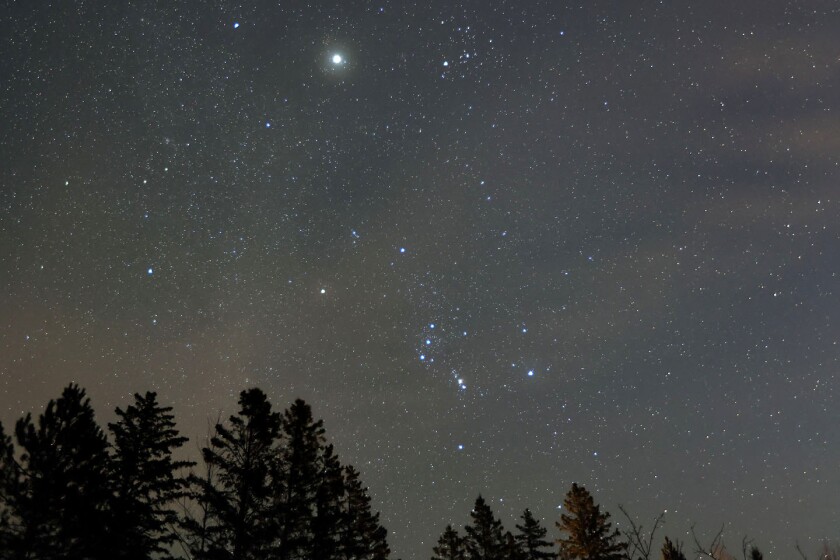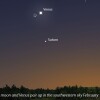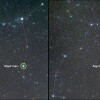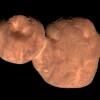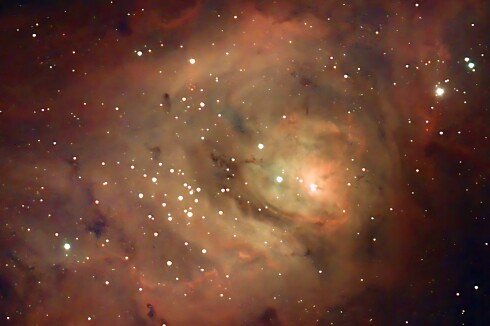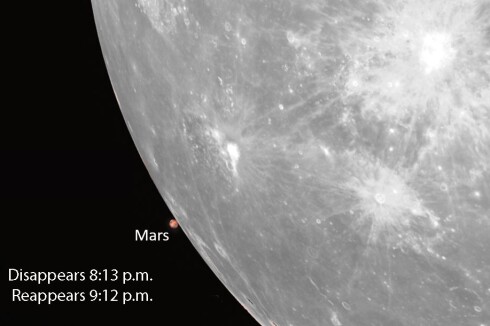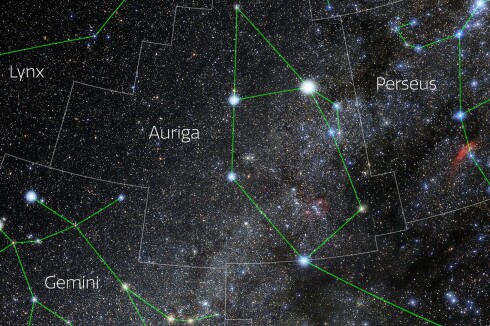December promises to be a sparkly month. Venus dominates the southwestern sky at dusk with Saturn following in same direction at nightfall. Jupiter is so bright in the east it practically shouts “Look at me!” And Mars is just a month away from its closest approach to Earth in nearly two years.
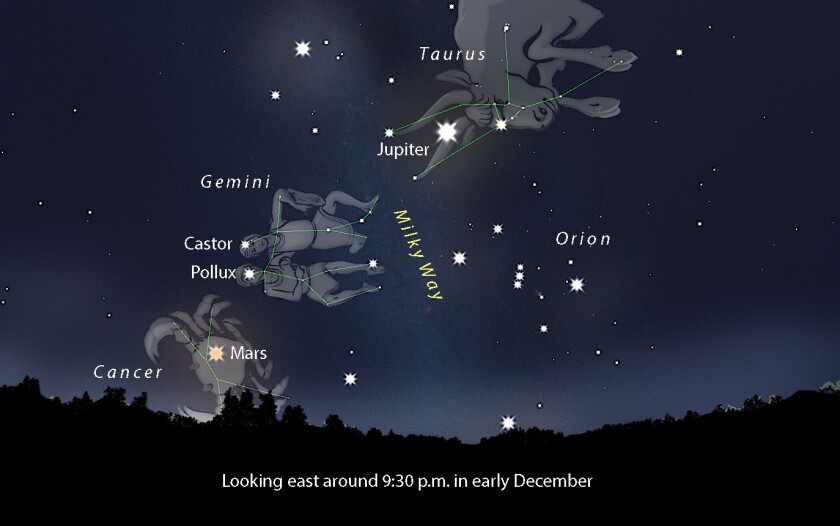
You might recall seeing the Red Planet a couple months ago. Look again. It's now brighter than Arcturus and rises much earlier. Watch for it to peek between the trees around 9:30 p.m. local time low in the eastern sky in Cancer the Crab.
ADVERTISEMENT
Not only does the month usher in the longest and coldest nights of the year for northern hemisphere skywatchers but gobs of brilliant stars, too. We see more bright stars in winter than any other season. Tracing the familiar outlines of Orion, Gemini and the Big and Little Dogs makes it easy to forget the cold. Add in snow cover and a little moonlight, and I'd argue that winter nights are the prettiest of the year.
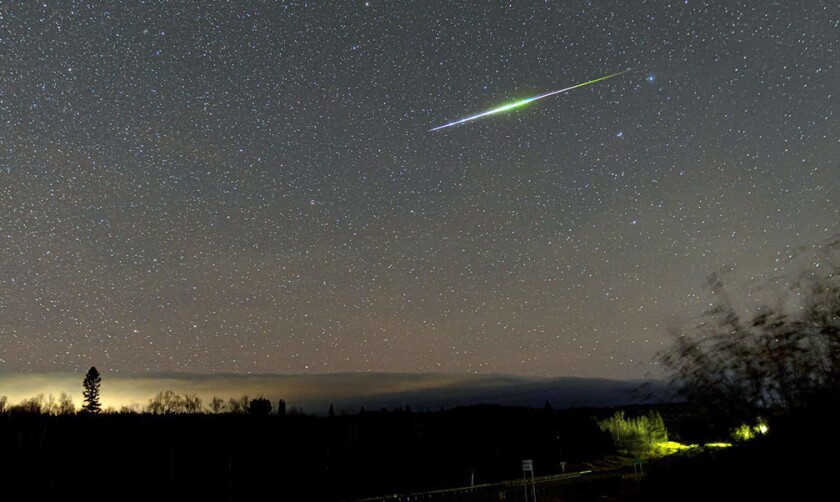
Highlights this month include the annual Geminid meteor shower. From a dark, moonless sky on the peak night, 80-100 meteors per hour might be seen. Unfortunately, the bright, waxing gibbous moon will compromise the show and reduce that number by about half. Still enough to make the effort worthwhile. Bundle up, relax in a reclining chair under a warm blanket and watch the meteors fly!
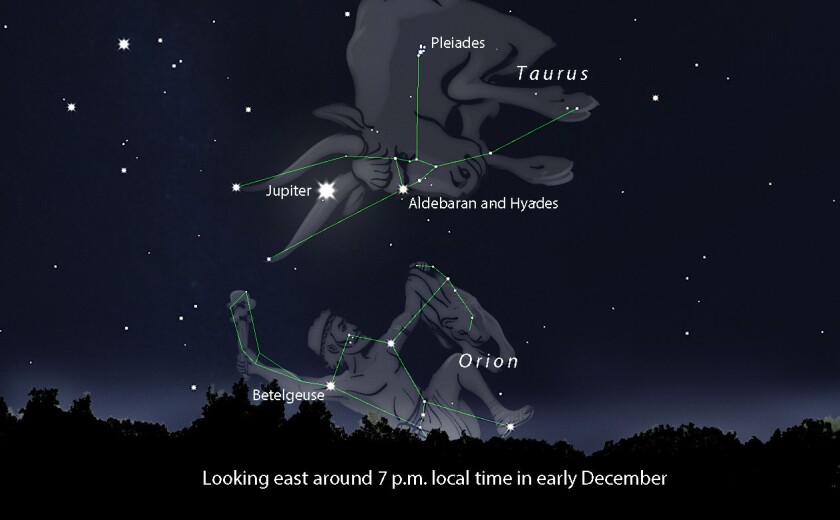
Our featured constellation is Taurus the Bull, home to the planet Jupiter this season. Taurus is visible in the eastern sky as early as 6:30 p.m. local time, but if you wait till after 7:30 it's higher up and easier to see. Surprise! It really does resemble a bull. When you “connect the dots,” Taurus has two star-tipped horns and a face outlined by the V-shaped Hyades cluster and bright, red-orange star Aldebaran. In Greek mythology, the figure represents Zeus disguised as a bull as he attempts to woo Europa, a Phoenician princess.
Download the free Stellarium Mobile app for Android and iPhone to help you find and identify the current planets and constellations. Do a Google search then install the app, set it in night mode (red screen) and point your phone skyward. For a free December sky map and calendar go to www.skymaps.com/downloads.html
December 2024 night sky happenings
Events (a.m. indicates the event happens in the morning sky):
Dec. 1 – New Moon. Not visible because it’s near the sun in the daytime sky.
ADVERTISEMENT
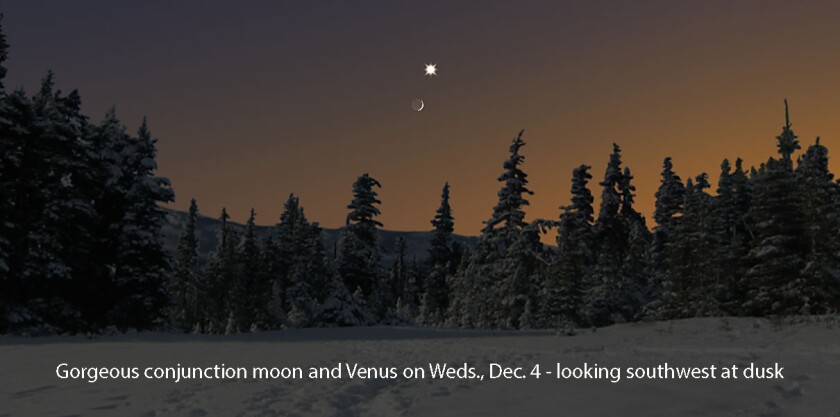
Dec. 4 – Pretty conjunction of the crescent moon and Venus this evening. They pair up in the southwestern sky at dusk about 2.5 degrees apart. Binoculars will easily corral the duo in the same field of view. Look 45 minutes to an hour after sunset.
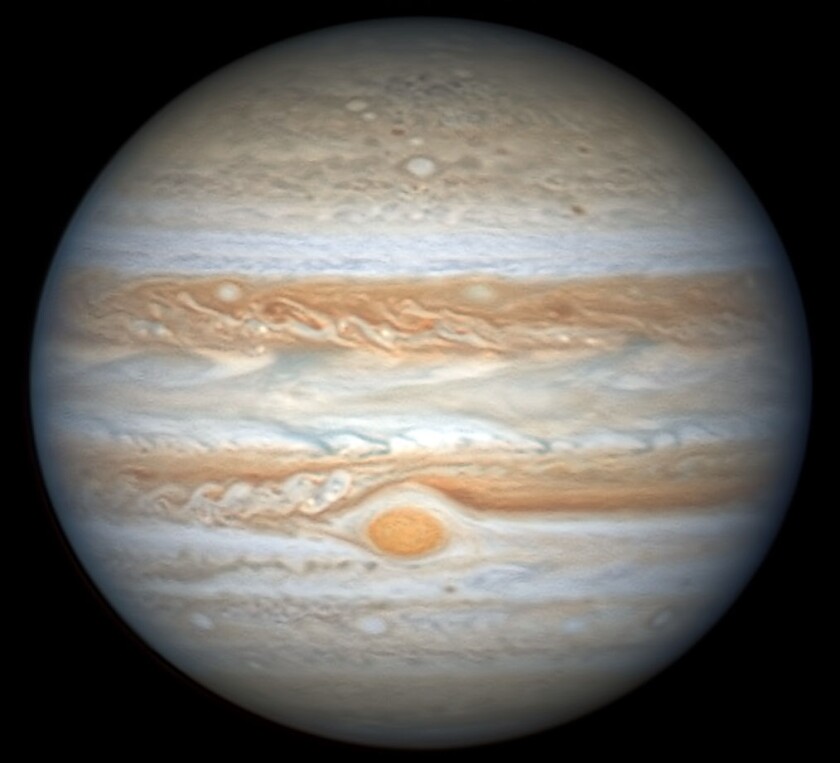
Dec. 7 – Jupiter brightest and closest to Earth for the year. The biggest planet is in Taurus the Bull to the left of Aldebaran and the V-shaped Hyades star cluster. Opposition means it’s opposite the sun in the sky, rising in the east when the sun sets and setting the following morning around sunrise.
Dec. 7 – Thick crescent moon shines to the right of Saturn tonight.
Dec. 8 – First quarter moon. Even though you’ll see a half-moon it’s called first quarter because it’s completed a quarter of its orbit around Earth since new moon phase.
Dec. 13 – Waxing gibbous moon shines above Jupiter tonight.
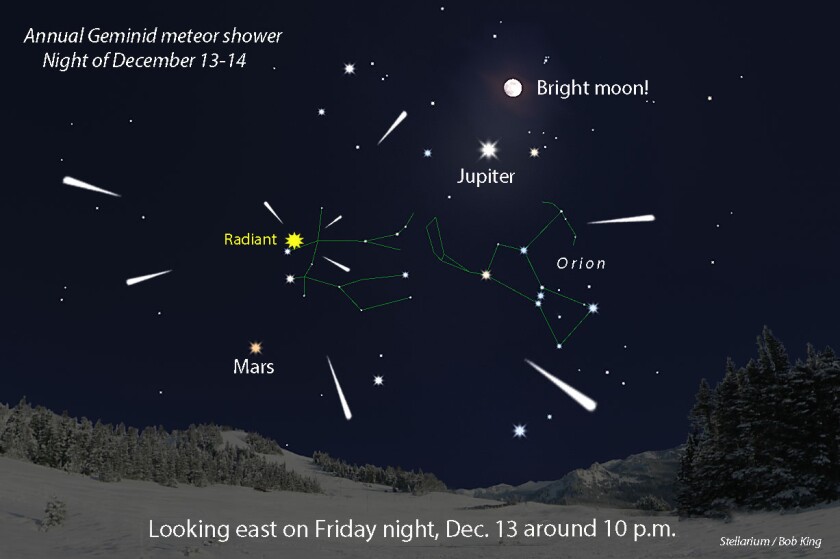
Dec. 13-14 (p.m and a.m.) – Peak of the annual Geminid meteor shower. You can start watching as early as 9 p.m. local time but the number of meteors will increase after midnight into the early morning hours. To preserve as much of your night vision as possible face away from the bright moon. You’ll know you’re seeing a Geminid meteor if you can trace its path back to the constellation Gemini the Twins, located to the east and above Orion.
Dec. 15 – Full Cold Moon. Shines to the left of Jupiter tonight. The moon sits in nearly the same spot the sun occupied on the summer solstice. Around midnight when it stands highest in the sky, shadows cast will be identical in length to those seen under the summer sun.
ADVERTISEMENT
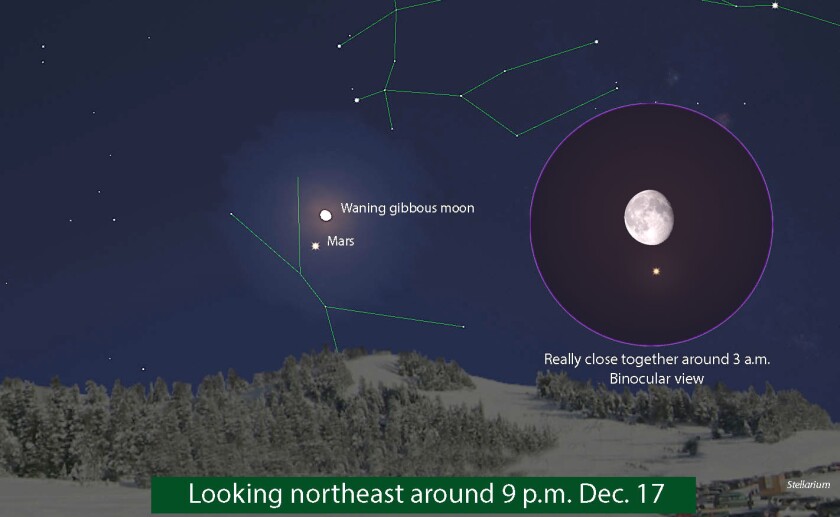
Dec. 17-18 (p.m. and a.m.) – Fine conjunction of the waning gibbous moon and bright Mars. They’ll be closest − less than half a moon diameter apart − during the early morning hours of Dec. 18.
Dec. 20 (a.m.) – Waning gibbous moon less than 2 degrees to the left (east) of Leo’s brightest star Regulus this morning.
Dec. 21 – Winter solstice at 3:19 a.m. Central Time. Official start of winter. Longest night and shortest day of the year. The sun rises and sets farthest to the south today. Starting tomorrow it turns back north and the amount of daylight begins to increase.
Dec. 22 (a.m.) – Last quarter moon and peak of the annual Ursid meteor shower. The Ursids produce about 10 meteors per hour from a streaming point just below the Little Dipper’s Bowl in the northern sky. The shower is active all night.
Dec. 23-31 (a.m.) – Mercury shines brightly low in the southeastern sky about 45 minutes to an hour before sunrise not far north of Antares, the brightest star in Scorpius the Scorpion.
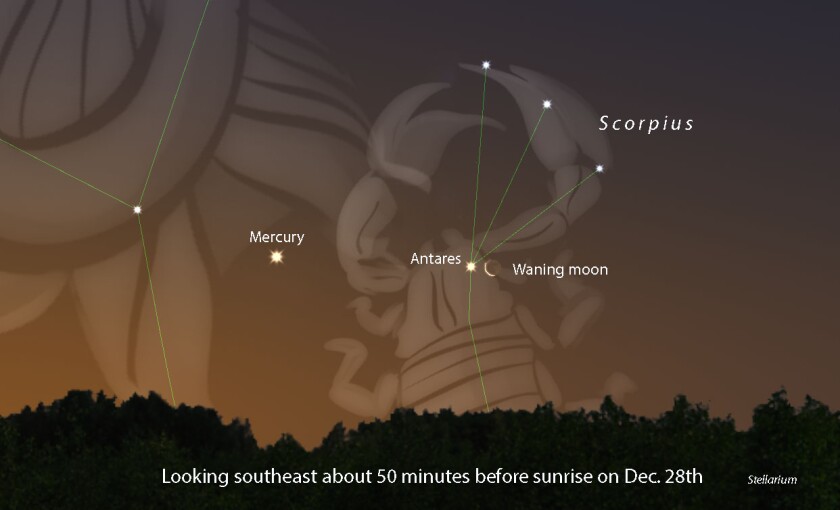
Dec. 28 (a.m.) – Delicate morning crescent in a close conjunction with Antares low in the southeastern sky during morning twilight with Mercury nearby. Use binoculars.

